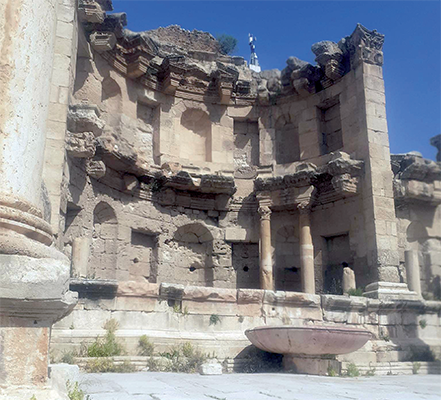Record added successfully


Although the ancient sites of Ammon, Gerasa and Umm Qais share similarities with other sites in the Decapolis, the Levant, North Africa and Italy, they have distinct differences, according to an American scholar.

“Jerash is probably the best example of conforming to typical Roman water distribution practices. The water supply utilises street fountains and large reservoirs, cisterns and basins hidden within public buildings to facilitate water distribution,” said Clare Rasmussen from the Department of Classical and Near Eastern Archaeology at Bryn Mawr College.
The major water consuming buildings are typical Roman public buildings, like baths, markets and ornamental nymphaeum fountains, she said.
Furthermore, unique uses of water are seen in the Temple of Artemis complex, the South Theatre and the north tetrapylon, Rasmussen said, noting that the north tetrapylon is an interesting structure, as the waterspouts are found on the north and south pilasters. “The spouts may have been only decorative since there is no evidence of basins or waterproof plastering. In comparison, there are fountains on the arches at Pompeii and on the Arch of Caracalla at Volubilis [Morocco]. Therefore, Jerash’s tetrapylon could have been used as a fountain or at least mimicking the design of one,” Rasmussen explained.
“The types of buildings that are consuming water are less understood. Most of the water was consumed by the nymphaeum and adjacent fountain structure. As the water route progressed west down the main street it likely supplied other Roman public buildings, but their function is unknown. In the later Roman period, the construction of two bath houses additionally became large consumers of the water supply,” Rasmussen elaborated.
Like Jerash, the theatres at Umm Qais and Amman both show evidence of being connected to the water supply, she said.
“These are likely later modifications to the theatres to allow for water spectacles, which became popular from the 3rd through 5th centuries AD,” Rasmussen noted. At Jerash and Umm Qais structures were built at the extra-urban spring site, she said, adding that at Jerash, this is the Birketein, which includes a small theatre, bath and large double pool reservoir.
The spring sites were used for religious festivals and healing cults. Examples of similar sites show that this was a larger trend within the region and Roman Empire, she said.
“Jerash and Umm Qais provide a useful lens to compare Amman, which is less understood archaeologically. Essentially, Amman follows the same trends as the region, with the water supply following the colonnaded street supplying the major Roman public buildings of the lower city [nymphaeum, bath and forum]. The case of the Citadel is different, because it relied on rainfall to stock the cisterns,” Rasmussen said.
--
Source: the Jordan Times.